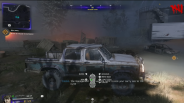Players in the National Hockey League can expect to take their lumps, courtesy of hard-charging opponents, but it's mumps, not lumps, that have occupied the league's attention in recent weeks.
More than a dozen players and two referees in the NHL have come down with mumps in the last 2 months, and the league is testing players and others amid fears of a spread of the disease.
Mumps -- a viral disease that can result in swelling of the salivary glands along with headache, fever and fatigue -- has hit players from the Anaheim Ducks, the New York Rangers, the Pittsburgh Penguins, the New Jersey Devils and the Minnesota Wild, league officials say.
Coughing and sneezing can spread the illness, particularly in close quarters -- for instance in a hockey locker room.
The long incubation period for month -- up to 3 weeks -- will make it difficult to determine when the outbreak is being brought under control, doctors say, and also makes it difficult to effectively quarantine those who have been exposed.
"It is certainly an outbreak that was unexpected and has caused unwanted disruption at the team level, but it is not something we have any significant control over," the league's deputy commissioner Bill Daly said.
The league's player association says it is working with the Centers for Disease Control and Prevention to make booster vaccines available to players to provide information on the disease to teams and to individual players.
Pittsburgh Penguins forward Beau Bennet, who has been screened for mumps, recently made a visit, along with several teammates, to Children's Hospital of Pittsburgh to spread some holiday cheer.
The hospital says it will isolate any patients and their families who had contact with Bennet and who were not current with their age-appropriate mumps vaccinations and would closely monitor them.
In the U.S., babies between 12 and 15 months of age are routinely vaccinated against the disease with the MMR (measles, mumps and rubella) vaccine, with a second dose given at between 4 to 6 years of age.
After almost being eradicated by 1967, the viral disease re-emerged in 2000.
A previous outbreak in 2006 saw thousands of college students come down with the disease.
There is no cure for mumps, although most cases clear up on their own within two weeks.
Occasionally, though, there can be severe complications including deafness or inflammation of the brain, encephalitis, or of the spinal cord, meningitis.
ⓒ 2025 TECHTIMES.com All rights reserved. Do not reproduce without permission.




